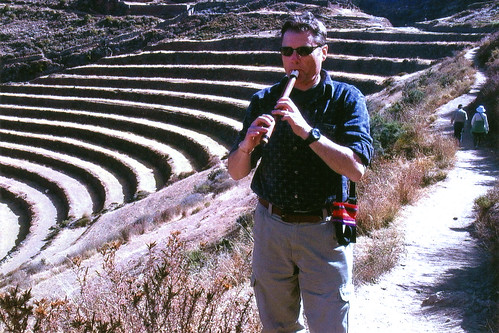
Click image to view full size
As much as I wanted to stay at the ruins I had also read that the market at Pisac, which happens three times a week, was a "must see" and Peruvians were said to drive over the hill from Cuzco to shop there.
Colonial Pisac was built around 1572. This was during a time when the Spanish were trying to gather the Quechua people into villages in order to better control them. The town was laid out in a traditional Incan grid of narrow cobblestone streets with the gutters running down the middle, but there was also a Spanish Plaza de Arma and a Catholic church. In the plaza there is a tree that, according to legend, Francisco Pizarro, the conquer of Inca Peru is said to have hitched his horse to, which would make the tree over 500 years old.
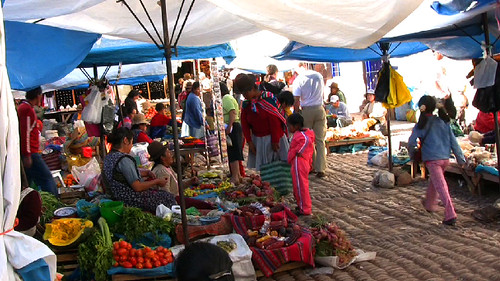
Click image to view full size
You may have noticed that all of the images in this post are not the best. That is because they are really lifts from the video I was trying to discreetly film. One of the many ways that the locals make money is to dress up in full traditional outfits and offer to pose for a photo, with or without you in the shot, for 1 Sol. The Sol is their version of our dollar and during our visit was worth about 33¢. Paying to take someone's photo was not a bad thing per se, but once you took a photo of one person you became known as an easy target and others would descend on you to take their photos and pay them too. For that reason I discreetly turned on the video camera and casually held it to my chest so as not to attract attention. This technique worked to keep most of the people from asking to pose for me, some just asked if they saw you with a camera, but the video turned out pretty bad. All shakey, out of focus and blurred.
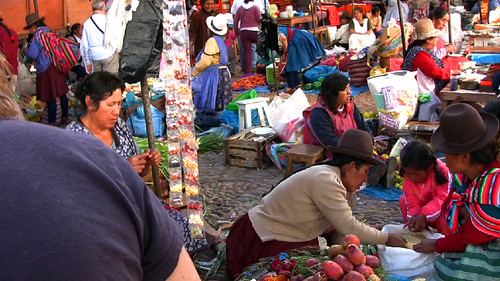
Click image to view full size
Traditionally the yarn for textiles is dyed with natural dyes. These dyes are made from vegetable and mineral sources among others. In the image below the woman is holding up strips of little packets full of dye. There were a lot of vendors selling these. Unfortunately traditional dyes are losing out to modern factory dyed yarn. This is compounded by western tourists that buy textiles with brighter colors but don't realize, or care, that's not not traditional.
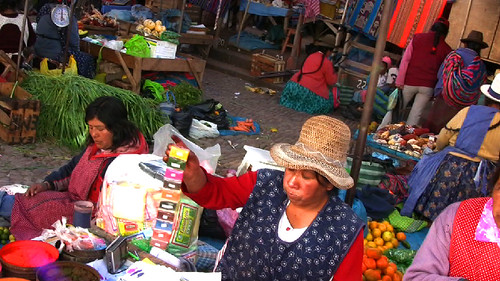
Click image to view full size
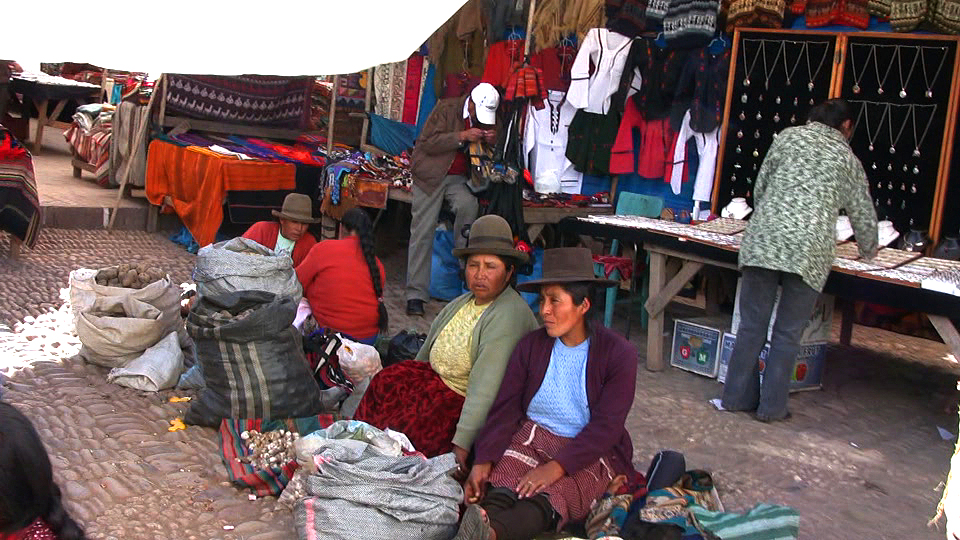
Click image to view full size
Toward the back of the food section things calmed down a bit and there was an entrance into the part that sells everything but food. There were textiles: blankets, rugs, panchos, scarves, sweaters, hats. There were musical tapes and CDs, instruments and toys. There was lots of jewelry. As to it's quality I can't say. There were gifts with everything from fine art items to mass-produced junk. There were less people in this area of the market and it was kind of quiet and slow. One woman, in the photo below, was sleeping on her wares.
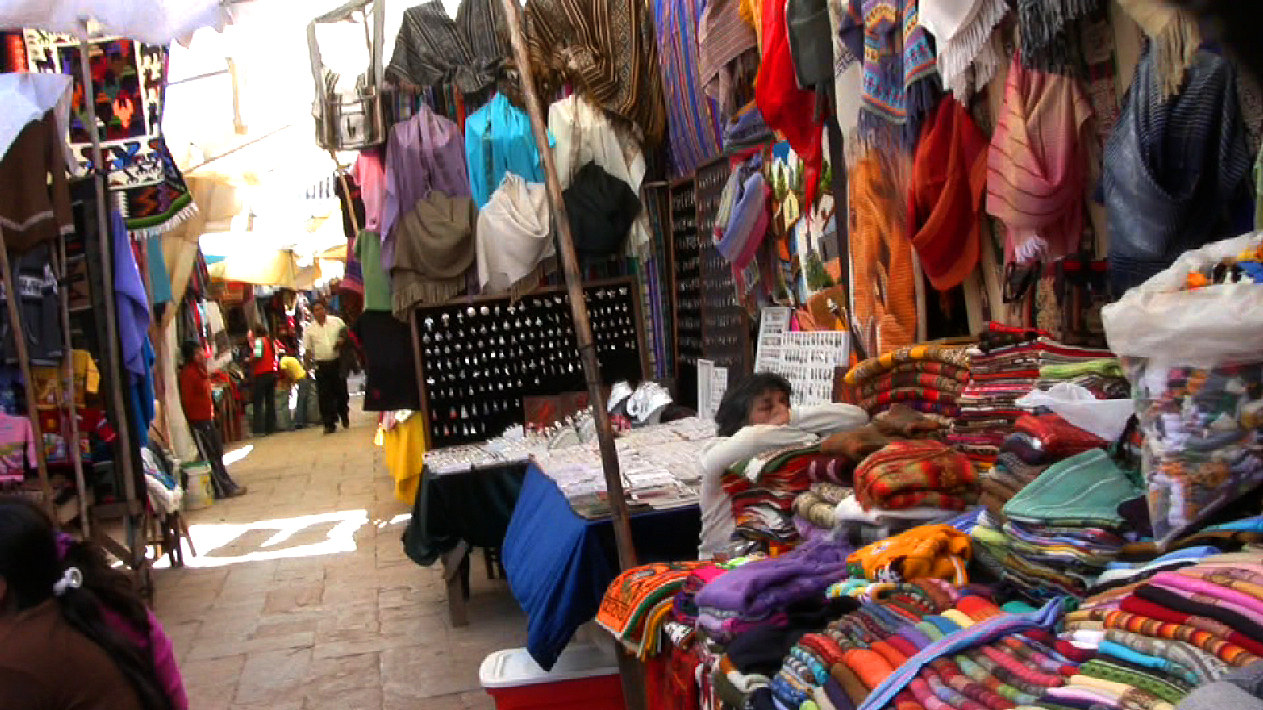
Click image to view full size
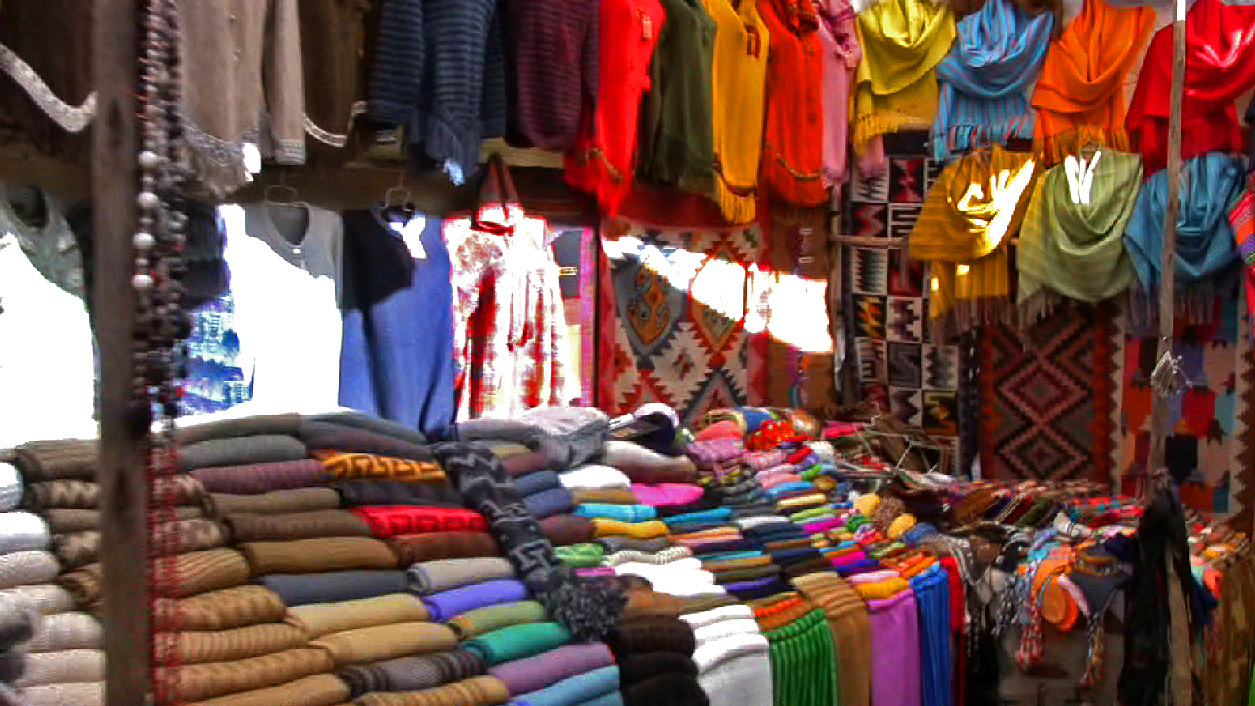
Click image to view full size
This part of the market was a maze of stalls. Rows upon rows that disappeared in the distance. We wandered around, overwhelmed and underwhelmed by the goods for sale. I almost bought a Charango but settled for a Quenacho, a larger Quena, instead.
Finally we popped out of the far end of the market a few blocks from the main square. The streets were cobbled and there was a gutter running down the middle. We saw this in every colonial town. It was nice and quiet. Kids were playing with dogs chasing them as we walked back to the main plaza.
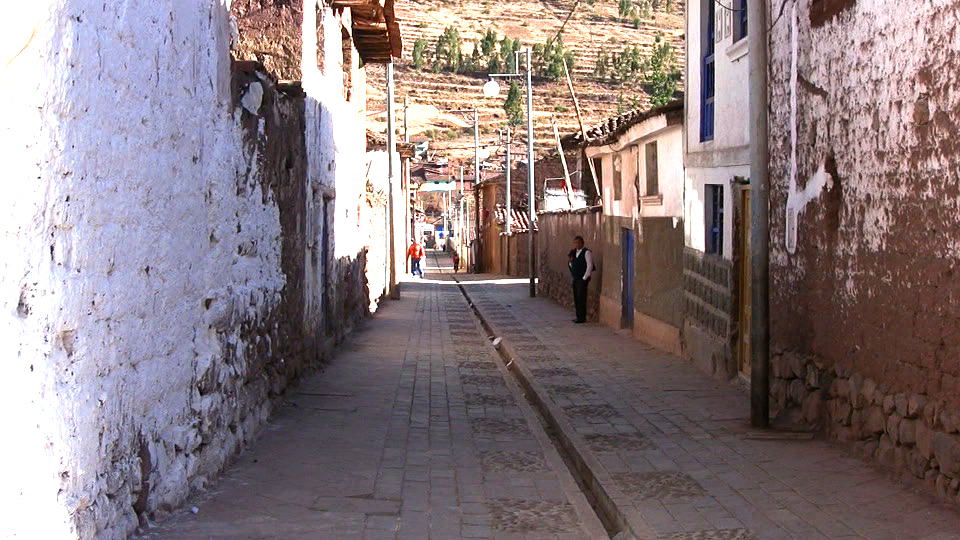
Click image to view full size
We walked back to the bus where suddenly Claire announced she wanted me to take her picture with some girls that were hanging out, holidng baby goats, hoping that tourists would snap their picture. You could also hold one of the kids (baby goat) too. "Why not?", I thought and quickly the girls ran over to us, each hoping Claire would hold their goat.
At the time it seemed everyone was really enjoying this. The girls seemed happy and Claire was thrilled. Later, however, when we reviewed the photos I took, we noticed that the girl on the far right was not happy! Not at all! At first we thought that she was mad that her goat wasn't picked, but, after studying the photo closer, she doesn't have a goat. Did we do something we weren't aware of? Was she mad or upset with one of the other girls?
We still don't know...
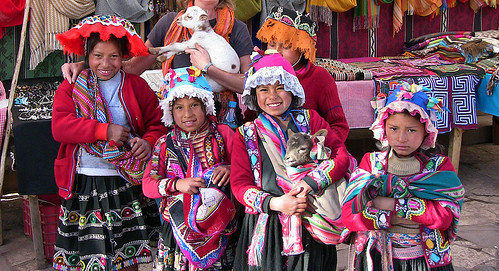
Click image to view full size
After the market we headed to our hotel for the night. In the lobby they had some mate de coca or coca tea. Being about 5:00 PM it was tea time so I had some. Mate de coca is supposed to be good for fighting the affects of altitude. The presence of stimulant alkaloids give the tea an effect like caffeine. It tastes a little like green tea and has the same color. I didn't really notice anything out of the ordinary, compared to the boost that tea gives me. Others however complained the next morning that they didn't sleep well.
We all went to bed early that night as the next day was to be very busy. More Inca ruins, river rafting on the Urubamba river, a visit to a local Chicha (corn beer) brewery and a traditional Quechean dinner in a private home.
© 2009 Cedar Mesa Music
Previous Peru Journals
Part 1: "Journey to Peru"
Part 2: "Lost in Translation"
Part 3: "Flight of the (Silver) Condor"
Part 4: Inca Pisac
I've been drooling over those beautiful fabrics. Imagine the nice Native flute cases that could be made from Peruvian textiles! The tidbit about the women's hats I found very interesting, too. The picture of the girls with their baby goats and Claire in the back...priceless!
ReplyDelete